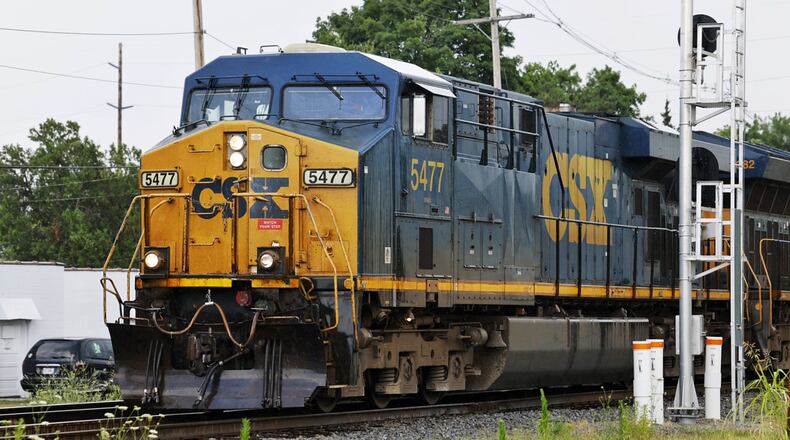“We understand there are challenges that exist in some communities in Butler County near our rail operations and we apologize for the inconvenience that stopped trains may cause the local communities,” Schild said, adding the company will determine if there are “any potential improvements that can be made, while also keeping an open line of communication with community leaders and first responders.”
States and local governments cannot regulate railroads, including how long trains can stop on the tracks blocking grade crossings. They also cannot limit the time intersections are blocked. Trains block stop on the tracks for various reasons, such as for a mechanical problem which was why Hamilton saw an hours-long blockage of several downtown crossings last week.
They could also block crossings to switch tracks, a lengthy process that could take upwards of an hour, and possibly more, which is why Laurel Avenue is often blocked by CSX trains.
Hamilton city officials late last month met with CSX Transportation, which has trains running through the city’s more congested and highly traveled areas, to talk about ways to reduce the number of blocked intersections, and limit the length of stops.
People impacted by a blocked crossing can report it to the Federal Railroad Administration, via a web-based reporting system or a smartphone app. Rail transportation companies are required to post signs directing motorists to call if there is a problem at the rail crossing, such as a blockage. CSX’s number, which is manned 24 hours a day, seven days a week, is 1-800-232-0144.
Credit: Nick Graham
Credit: Nick Graham
There is work at the federal level to do something about a problem communities across the country face.
U.S. Sen. Sherrod Brown, D-Cleveland, said he’s “very concerned” about stopped trains, and preventing first responders from timely getting to emergencies. He said the bipartisan infrastructure law invests in eliminating rail crossings, “but more is needed.”
“My staff and I are reviewing all legislative remedies in order to find a long-term solution that stops these dangerous obstructions to traffic, whether it is an emergency vehicle being impeded, or a child trying to walk to school,” Brown said.
The senator said he’s worked for years with local officials, railroad companies and relevant oversight agencies to address trains blocking roads in Southwest Ohio.
“When a train is stopped, it cuts a community in two and blocks access to schools and businesses,” he said.
While states cannot regulate railroad companies, it’s not preventing some lawmakers from trying to do that, or at Ohio Rep. Thomas Hall said, at least get the attention of railroads.
Hall, R-Madison Twp., and Rep. Jessica Miranda, D-Forest Park, last summer submitted a bill they hope would not be thrown out by a federal court if passed by the General Assembly. A 2019 Oklahoma law limiting the time for railroads can block city streets violated the federal government’s authority to regulate rail carriers and tracks, according to The Oklahoman.
House Bill 361 would require a railroad company to submit incident reports to the Public Utilities Commission of Ohio each time a train blocks a crossing for more than 5 minutes to the hindrance of traffic. It also proposes steep fines, $5,000 for a first violation and $10,000 for subsequent ones.
Hall said the bill hasn’t moved past a first hearing as the Transportation and Public Safety Committee chair asked the lawmakers to meet with CSX and Northfolk Southern (the two rail companies combined maintain more than 6,000 miles of track and at nearly 5,000 grade crossings).
Hall said he and Miranda have had multiple meetings with both rail companies.
About the Author


